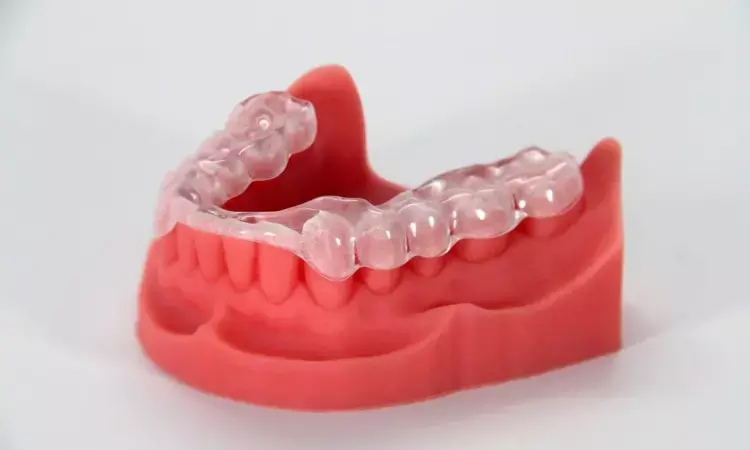- Home
- Medical news & Guidelines
- Anesthesiology
- Cardiology and CTVS
- Critical Care
- Dentistry
- Dermatology
- Diabetes and Endocrinology
- ENT
- Gastroenterology
- Medicine
- Nephrology
- Neurology
- Obstretics-Gynaecology
- Oncology
- Ophthalmology
- Orthopaedics
- Pediatrics-Neonatology
- Psychiatry
- Pulmonology
- Radiology
- Surgery
- Urology
- Laboratory Medicine
- Diet
- Nursing
- Paramedical
- Physiotherapy
- Health news
- Fact Check
- Bone Health Fact Check
- Brain Health Fact Check
- Cancer Related Fact Check
- Child Care Fact Check
- Dental and oral health fact check
- Diabetes and metabolic health fact check
- Diet and Nutrition Fact Check
- Eye and ENT Care Fact Check
- Fitness fact check
- Gut health fact check
- Heart health fact check
- Kidney health fact check
- Medical education fact check
- Men's health fact check
- Respiratory fact check
- Skin and hair care fact check
- Vaccine and Immunization fact check
- Women's health fact check
- AYUSH
- State News
- Andaman and Nicobar Islands
- Andhra Pradesh
- Arunachal Pradesh
- Assam
- Bihar
- Chandigarh
- Chattisgarh
- Dadra and Nagar Haveli
- Daman and Diu
- Delhi
- Goa
- Gujarat
- Haryana
- Himachal Pradesh
- Jammu & Kashmir
- Jharkhand
- Karnataka
- Kerala
- Ladakh
- Lakshadweep
- Madhya Pradesh
- Maharashtra
- Manipur
- Meghalaya
- Mizoram
- Nagaland
- Odisha
- Puducherry
- Punjab
- Rajasthan
- Sikkim
- Tamil Nadu
- Telangana
- Tripura
- Uttar Pradesh
- Uttrakhand
- West Bengal
- Medical Education
- Industry
Hybrid resin-based composites useful in printing efficient dental crowns: Study

Hybrid resin-based composites (RBCs) useful in printing efficient dental crowns, suggests a study published in the Composites Science and Technology.
Hybrid composites were introduced in the 1980s and are more commonly known as resin-modified glass ionomer cements (RMGICs). Initially, resin-based composite restorations in dentistry were very prone to leakage and breakage due to weak compressive strength.
Flowable photocurable resins can be printed effectively by stereolithographic 3D printing for dental applications; however, the 3D-printed objects' mechanical properties cannot meet the requirements for the dental restorative materials.
In this study, a group of researchers from China prepared a strong customized crown for tooth repair was first prepared via direct ink writing 3D printing from a high-viscosity hybrid paste of acrylic monomer and multi-scale inorganic particles.
The results of this study showed that:
· The hybrid resin-based composites (RBCs) could be printed successfully and smoothly through a metal nozzle with a gradually shrinking channel.
· The theoretical simulation of finite element methods was consistent with the experiment results.
· The printed objects were preliminarily cured incrementally and exhibited a low shrinkage ratio of only 2.58 ± 0.11%.
· The printed samples with crisscrossed layers by interrupting crack propagation exhibited superior mechanical properties (a flexural strength of 120.8 ± 4.1 MPa and a compressive strength of 323.6 ± 5.6 MPa) than their traditional moulding counterparts.
· Since the deposited layers exhibited improved resistance to bending forces, the flexural strength of the sample with a print orientation in adjacent layers (45–135°) even reached 145.5 ± 8.7 MPa.
Thus, the researchers concluded that the hybrid resin-based composites (RBCs) were successfully used to print strong, high-performance and biocompatibility dental crowns, expected to provide a customized component for the clinical restoration of teeth.
Reference:
A study titled, "3D-printed strong hybrid materials with low shrinkage for dental restoration" by Zhao M et. al published in the Composites Science and Technology.
Dr. Shravani Dali has completed her BDS from Pravara institute of medical sciences, loni. Following which she extensively worked in the healthcare sector for 2+ years. She has been actively involved in writing blogs in field of health and wellness. Currently she is pursuing her Masters of public health-health administration from Tata institute of social sciences. She can be contacted at editorial@medicaldialogues.in.
Dr Kamal Kant Kohli-MBBS, DTCD- a chest specialist with more than 30 years of practice and a flair for writing clinical articles, Dr Kamal Kant Kohli joined Medical Dialogues as a Chief Editor of Medical News. Besides writing articles, as an editor, he proofreads and verifies all the medical content published on Medical Dialogues including those coming from journals, studies,medical conferences,guidelines etc. Email: drkohli@medicaldialogues.in. Contact no. 011-43720751


